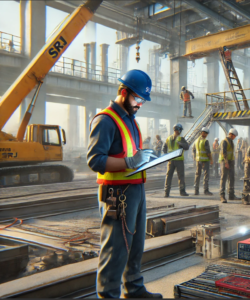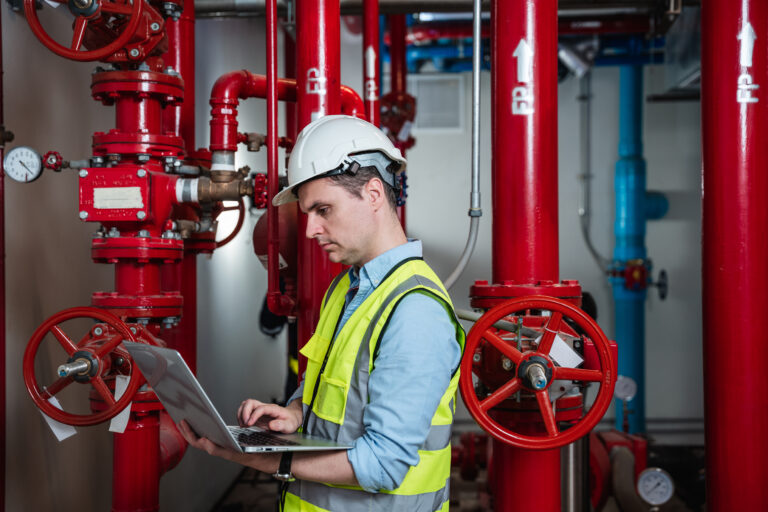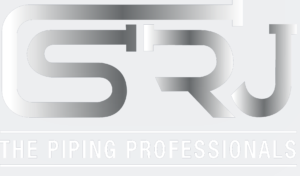Corrosion Protection in Piping: Safeguarding Your Industrial Systems
Table of Contents
Imagine waking up one morning, grabbing your favorite coffee mug, and noticing a tiny crack. You shrug it off, but with each sip, that crack grows wider until your mug finally falls apart, spilling your coffee everywhere. Now, imagine that mug as your industrial piping system, and the crack as corrosion—an invisible, relentless enemy.
Corrosion isn’t just a cosmetic problem, nor is it a minor inconvenience; it’s a pervasive issue that affects industrial infrastructure. Left unchecked, corrosion can lead to catastrophic failures, costly repairs, and unsafe working conditions. While the crack in your coffee mug may be visible, corrosion in pipelines often starts as an invisible threat, gradually weakening the system.
That’s why corrosion protection in piping is not optional—it’s a necessity. Just like you would take care of your coffee mug to prevent cracks, industrial piping systems need preventive measures to ensure longevity and safety. Let’s dive into the world of corrosion protection and explore how it safeguards your assets, operations, and investment.

The Science of Corrosion
At its core, corrosion is an electrochemical process. When metals come into contact with moisture and oxygen, they undergo a chemical reaction that produces oxides or other compounds, weakening the metal. The most familiar example is rust, which forms when iron reacts with oxygen and moisture to create iron oxide.
However, corrosion isn’t limited to rust. Different metals react differently, and various environmental factors contribute to the many forms of corrosion, each posing unique challenges to industrial piping systems.
Common Types of Corrosion
- Uniform Corrosion: This is the most common type, where the metal’s surface corrodes uniformly. While it may seem less dangerous, over time, it weakens the entire piping system.
- Pitting Corrosion: This form of corrosion is localized, creating small pits or holes in the metal. These pits may be small, but they can concentrate stress in specific areas, leading to severe damage.
- Galvanic Corrosion: When two different metals come into electrical contact in the presence of an electrolyte (such as water), the more reactive metal corrodes faster, while the less reactive metal corrodes more slowly.
- Crevice Corrosion: This occurs in confined spaces, such as crevices or gaps between metal parts, where moisture can be trapped, leading to corrosion in these areas.
- Intergranular Corrosion: This type affects the grain boundaries of a metal, often due to improper heat treatment, and can cause sudden, catastrophic failures.
Why Corrosion Protection is Critical
Corrosion doesn’t just degrade materials; it compromises safety, reduces efficiency, and increases operational costs. When it comes to industrial piping systems, the consequences of unchecked corrosion can be dire.
Structural Integrity
Corrosion weakens the structural integrity of pipelines, leading to cracks, leaks, and potential failures. Protecting pipes from corrosion ensures they maintain their strength and reliability over time.
Piping Longevity
Pipes are a significant investment, and corrosion dramatically shortens their lifespan. Corrosion protection measures extend the life of your piping systems, saving you from costly replacements.
Safety Concerns
Corroded pipes are a safety hazard, especially in industries that handle hazardous materials. A corroded pipeline could leak toxic chemicals or gases, endangering workers and the environment.
Regulatory Compliance
Industries are subject to strict safety and environmental regulations. Corrosion-related failures can lead to fines, legal action, and reputational damage. Implementing corrosion protection ensures compliance with industry standards.
Methods of Corrosion Protection
There are several methods to protect piping systems from corrosion, ranging from coatings to advanced electrochemical techniques. Let’s explore the most common methods used in industrial settings.
Industrial Coatings
Industrial coatings create a barrier between the metal surface and corrosive elements. Different coatings are used depending on the environment and the type of pipes being protected.
- Epoxy Coatings: These are widely used for their excellent adhesion and chemical resistance, making them ideal for harsh environments.
- Zinc-Rich Coatings: These provide galvanic protection, with zinc acting as a sacrificial layer, corroding in place of the metal being protected.
- Fusion-Bonded Epoxy (FBE): Commonly used in the oil and gas industry, FBE coatings are applied in powder form and fused to the metal surface, providing a durable protective layer.
Cathodic Protection
Cathodic protection is an electrochemical method that prevents corrosion by turning the metal surface into the cathode of an electrochemical cell.
- Sacrificial Anode Protection: In this method, a more reactive metal (such as zinc or magnesium) is attached to the pipeline. The anode corrodes, protecting the pipeline from corrosion.
- Impressed Current Cathodic Protection (ICCP): This method uses an external power source to supply a current that counteracts corrosion. It’s often used for large pipelines.
Material Selection
Choosing the right materials can significantly reduce the risk of corrosion. Some materials are naturally more resistant to corrosion than others.
- Stainless Steel: Known for its corrosion resistance, stainless steel is a common choice for environments where rust and oxidation are concerns.
- Copper-Nickel Alloys: These alloys resist corrosion in seawater, making them ideal for marine applications.
- Plastic and Composite Materials: In some environments, non-metallic materials like PVC or composite pipes can be used to avoid metal corrosion altogether.
Lining and Coatings
In addition to external coatings, internal linings can protect pipes from corrosive substances.
- Cement Mortar Lining: Often used in water pipelines, cement mortar provides a smooth, corrosion-resistant surface that also improves flow.
- Rubber Linings: Rubber linings are effective in protecting pipes from abrasive or highly corrosive materials.

Maintenance and Monitoring
Corrosion protection isn’t a one-time effort. Regular maintenance and monitoring are essential to ensure long-term protection. Periodic inspections, thickness measurements, and re-coating as needed can extend the life of your piping systems and prevent unexpected failures.
The Economic Impact of Corrosion
The global cost of corrosion is estimated to be over $2.5 trillion annually, accounting for about 3-4% of the world’s GDP. This staggering figure underscores the importance of investing in corrosion protection measures.
Cost of Corrosion-Related Failures
Corrosion-related failures can be incredibly costly, not just in terms of repairs, but also in lost production, environmental cleanup, and legal liabilities. In industries like oil and gas, a single pipeline failure can cost millions of dollars.
Savings from Corrosion Prevention
While corrosion protection requires an upfront investment, it pays off in the long run. Preventing corrosion reduces the need for frequent repairs, lowers the risk of catastrophic failures, and extends the life of your piping systems.
Real-World Examples of Corrosion Protection
To highlight the importance of corrosion protection, let’s look at a few real-world case studies.
Offshore Oil Platform
An offshore oil platform in the North Sea faced significant corrosion challenges due to the harsh marine environment. By implementing a comprehensive corrosion protection plan that included both cathodic protection and industrial coatings, the platform’s infrastructure was extended by over 20 years, saving millions in replacement costs.
Municipal Water Supply System
A city suffering from frequent water pipe leaks due to corrosion implemented a re-lining project using cement mortar. The result was a significant reduction in water loss, lower maintenance costs, and improved service reliability.
Chemical Processing Plant
A chemical processing plant dealing with highly corrosive substances switched to corrosion-resistant materials and applied specialized industrial coatings. This not only improved safety and efficiency but also extended the life of the plant’s piping systems.
Conclusion
Corrosion protection is not just a technical necessity—it’s a smart investment in the long-term safety, reliability, and productivity of your industrial piping systems. Whether you’re applying industrial coatings, using cathodic protection, or selecting corrosion-resistant materials, every step you take to prevent corrosion is a step toward securing your infrastructure.
Don’t wait for a tiny crack to become a major problem. Act now to protect your pipes from the silent, destructive force of corrosion. Get a Free Quote on Corrosion Protection Services to ensure your piping systems remain strong and reliable for years to come.
Know more about our services :
- Key Benefits of Professional Piping Inspection Services
- How to Choose the Right Piping Material Selection Guide
External Sources to Know more deatiled information:
Related Blog:
Struggling with Corrosion in Your Piping Systems?
SRJ Piping India helps you detect, prevent, and manage corrosion with tailored protection strategies and expert support.
